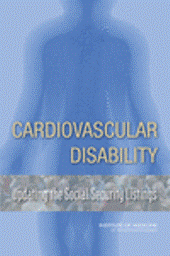On Friday, Margaret Beardsworth, who works on insurance issues here at PHA came in with some great news. A partnership of patients, family members and medical professionals that began 3 years ago has been making steady advances in working with the Social Security Administration (SSA) to understand the special issues of PH patients, especially as it relates to diability issues. Friday's victory comes out of the work of a team of physicians that has been working with the Institute of Medicine under contract to SSA. The impact is expected to be very large for PH patients.
Here's what Margaret wrote today in her guest blog...
“YAHOO!!!!!” That was Alan Harder’s response Friday when PHA received an official report from the Institute of Medicine (IOM) committee that outlines a set of recommendations for the Social Security Administration (SSA) to use in updating their Cardiovascular (CV) Listing of Impairments.
Alan is a former SSA employee and PH caregiver. Like many others in the PH community, Alan has been working for three years to guide the SSA in the process of updating the PH-related language in their Listing of Impairments - the list of disease states that adjudicators use to determine if an applicant qualifies for Social Security Disability (SSD).
Friday’s report is a detailed set of recommendations that touches on the broad spectrum of cardiovascular disease states. It contains an entire section dedicated to PH, with language mirroring, almost word for word, the recommendations that PHA provided the IOM. You can learn more about the recommendation process from one of Rino’s past blog entries.
If 328 page report is a little heavy, you can read the report introduction instead - a 4 page PDF that gives an overview of the IOM’s work and mentions pulmonary hypertension twice.
What does this mean? We are one step closer to streamlining the SSD application process for PH patients by updating the language used to determine if a PH applicant is disabled. The Social Security Administration is still a long way from releasing completely updated cardiovascular listings, but the PH community is heading in the right direction!
A big reason PH is receiving so much attention in this process is because of the united efforts between the Scientific Leadership Council’s physicians, PH community members and activists and the government. A special thank you to all who have volunteered their time and expertise on this initiative, including Drs. Ronald Oudiz (Harbor UCLA), Robyn Barst (Columbia University emeriti), Harrison Farber (Boston U.), Vallerie McLaughlin (U. of Michigan), Gregory Elliot (University of Utah), Adaani Frost (Baylor), Michael McGoon (Mayo), Nickolas Hill (Tufts), Erika Rosenzweig (Columbia), Charles Burger (Mayo) as well as Carol Vreim, Alan Harder, Gavin Lindberg, and Jennifer Jaff.
Making noise about a rare disease like PH can be challenging, but we’ll continue to push forward, one step at a time, each time making a bigger difference.







